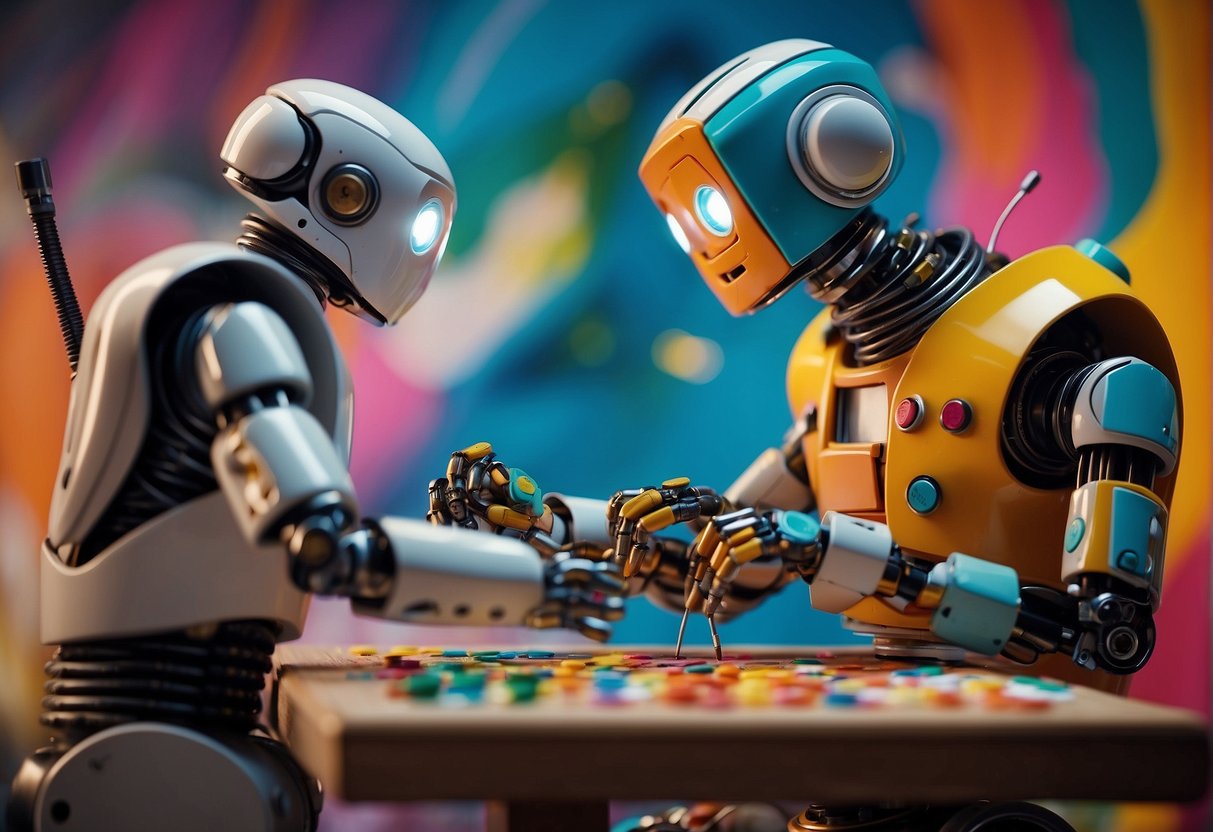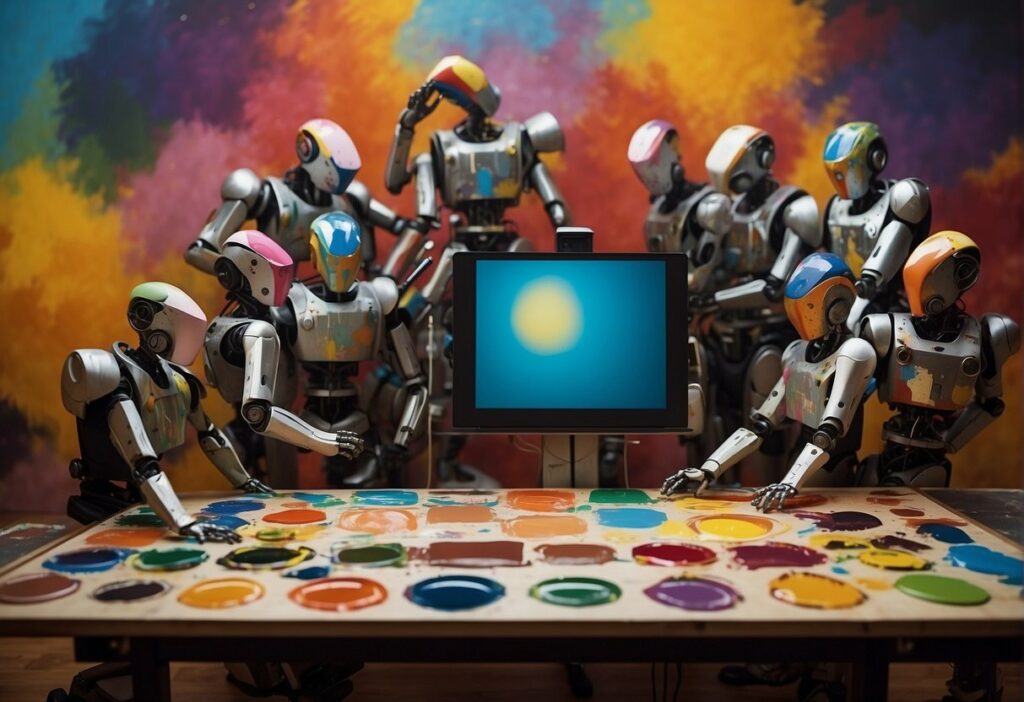Do Humans Connect Emotionally with AI-Created Artwork: Unveiling the Psychological Impact

The advent of artificial intelligence in creative domains has sparked a debate on whether AI-generated compositions can resonate emotionally with human audiences.
Traditional art, created through human experience and emotion, has long been revered for its ability to evoke empathy, reflection, and a multitude of emotional responses.
In contrast, AI-created artwork emerges from algorithms and data patterns, leading to questions about the depth and authenticity of the connections it can forge with viewers.
AI-created art is breaking ground by producing works that are increasingly complex and aesthetically compelling. These artworks, stemming from machine learning and neural networks, challenge the notion that only human-made creations can touch the soul. Some argue that the emotional impact of art comes not from its origin, but from the viewer’s subjective experience and the meanings they derive from the piece.
Investigating this issue reveals broader implications for the future of art and human-machine interaction. It raises pivotal questions regarding the nature of creativity, emotional understanding, and whether the source of an artwork affects its ability to connect on a human level. As AI continues to evolve, understanding its potential to generate emotionally resonant art becomes a fascinating field of exploration.
Historical Context of Human-Art Interaction

Art has played a pivotal role in human culture, reflecting societal values and emotional states across time. As art has evolved, so has the human relationship with it, marking significant shifts in how people perceive and emotionally connect with artistic creations.
From Cave Paintings to Digital Art
The journey of art began with primitive mark-making, as evidenced by cave paintings over 40,000 years old. These early forms of art were not mere decorations but served as narrative tools and symbols of communal experiences. As civilizations advanced, so did art techniques, branching from the rudimentary to the sophisticated. This progression led to:
- Ancient Civilizations (Egyptian, Greek, Roman): Symbols and storytelling continued, with art being used for religious and political expression, often commissioned by the elite.
- Middle Ages: Art predominantly served religious purposes, evident in the architecture of cathedrals and intricately illustrated manuscripts.
- Renaissance Period: A shift to humanism was mirrored in art, fueled by advancements in perspective, shading, and the depiction of human anatomy.
- Industrial and Modern Era: Mass production and technological advancements brought new materials and methods, with art movements reflecting the changing times—Impressionism, Expressionism, Cubism, and more.
The digital age has bridged the gap between artist and audience even further. Digital art, video art, and computer-generated works can reach global audiences instantaneously, transforming the art interaction landscape once again.
Evolution of Artistic Appreciation
The perception and emotional connection with art have also evolved. Appreciation can be dissected into:
- Subjective Aesthetics: Personal tastes and preferences greatly influence emotional reactions to art. Cultural background and exposure to art play formative roles in shaping these aesthetics.
- Academic Study: The formal study of art history, critique, and theory provides structural frameworks for appreciation. Experts categorize and evaluate art, influencing public perception.
Appreciation is no longer exclusive to the elite or academia but democratized through widespread access to art via museums, galleries, public installations, and the internet. This accessibility allows diverse audiences to engage with and form emotional connections to artwork from various periods and styles.
Psychology of Emotional Connection with Art

The emotional impact of art is complex, involving various psychological theories and responses. Understanding why individuals form emotional connections with art requires an examination of the components of this process.
Emotional Resonance in Art
Art’s power often lies in its ability to evoke feelings and mirror emotions. Emotional resonance occurs when a piece of art reflects a person’s inner experiences and emotions. Factors that contribute to this resonance include:
- Subject Matter: The themes and concepts depicted can align with personal experiences or feelings.
- Color Usage: Colors can have a psychological impact, with certain hues eliciting specific emotional responses.
- Composition and Form: The arrangement of elements within the artwork can create a sense of harmony or tension that resonates emotionally.
- Context and Culture: An individual’s background influences how they perceive and emotionally respond to art.
Attachment Theory and Art Perception
Attachment theory, originally about bonds between humans, extends to interactions with art. It suggests that the way individuals connect with artwork can be reflective of their attachment styles:
- Secure Attachment: Individuals may experience a stable appreciation of various art forms and exhibit open, consistent emotional responses to artworks.
- Anxious-Preoccupied Attachment: There may be intense and fluctuating emotional connections, with a tendency to be deeply moved by certain artworks.
- Dismissive-Avoidant Attachment: These individuals might have a more detached or intellectualized engagement with art, often avoiding emotional entanglement.
- Fearful-Avoidant Attachment: Some may have conflicting feelings towards art, experiencing both appreciation and a hesitance to engage emotionally.
AI in Contemporary Art

AI algorithms are reshaping the landscape of contemporary art, as machines are being used to create artworks that evoke an emotional response among audiences. Public opinion varies as viewers encounter pieces generated without a traditional artist’s touch.
AI Algorithms as Artists
The use of AI algorithms in art creation has transitioned from a novel experiment to a significant trend in the art world. These algorithms process vast amounts of data and employ techniques like neural networks and machine learning to generate complex visual compositions.
Notable projects include The Next Rembrandt, a 2016 initiative where a computer analyzed the works of Rembrandt to produce a new artwork in the Dutch master’s style. Similarly, AI has been utilized to generate abstract works, emulating the methods of human artists and at times creating entirely new aesthetics.
Public Reception of AI-Created Art
The public reception of AI-created art is decidedly mixed. Some individuals express awe at the technical prowess displayed and the ability of algorithms to mimic or even advance human creativity.
However, others remain skeptical, questioning the authenticity and emotional depth of art produced by artificial intelligence. Emotional engagement is a critical measure for many viewers, who may challenge the idea of a machine evoking genuine sentiment.
The sale of AI-generated artworks at prestigious auction houses, like Christie’s sale of Edmond de Belamy, has sparked lively debate on the definition and value of art.
Analyzing Emotional Engagement

The emotional engagement of viewers with AI-created artwork is measured through empirical research and comparisons to human-created art.
Empirical Studies on AI Art Engagement
Empirical studies provide quantitative data on how individuals emotionally connect with AI-generated art. One such study conducted in 2023 used biometric sensors to measure participants’ physiological responses, such as heart rate and skin conductivity, while they viewed AI-created pieces.
The results indicated peaks in emotional arousal when participants encountered AI artworks that featured complex patterns and familiar forms. Moreover, surveys complemented these findings by reporting that subjects often felt surprise and curiosity albeit to varying degrees of intensity.
Comparison with Human-Created Art
When comparing the emotional engagement evoked by AI-generated art to that of human-created art, several factors come into play. Authenticity is often debated, with some viewers perceiving AI art as less genuine and therefore eliciting weaker emotional reactions.
However, a study from the Journal of Creative Behavior found that when the origin of the artwork (AI versus human) was concealed, participants’ emotional responses were statistically similar. They assessed artworks based on qualities such as color, form, and content, showing that the perceived emotional connect might depend more on these elements than on the creator’s nature.
Implications for the Future of Art

The intersection of artificial intelligence and art is transforming creation and appreciation, signaling a significant evolution in the art world.
The Role of AI in Art Education
Educational institutions are beginning to incorporate AI into art programs, providing students with tools to experiment with new forms of creativity. For example, AI algorithms can suggest alterations or improvements to student artworks, which can help in developing skills and understanding of composition, color theory, and other fundamental art principles.
- Tools: AI software as a teaching assistant
- Skills Development: Enhanced understanding of art techniques
- Creative Exploration: AI-driven experimentation in art styles
Potential for Deepening Human-Art Connections
AI-created artwork has the potential to evoke emotional responses by tailoring experiences to individual preferences and cultural contexts. Museums might use AI to analyze visitor reactions and curate personalized experiences, leading to a deeper connection between the viewer and the artwork.
- Personalization: AI curates art experiences to match visitor profiles
- Emotional Engagement: Algorithms assess and respond to emotional cues
- Cultural Relevance: AI considers cultural significance in art presentation
